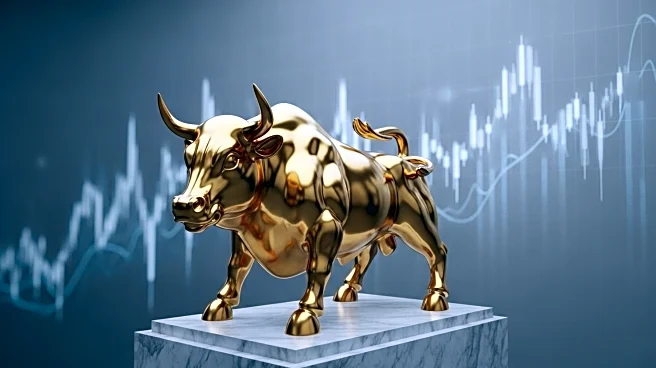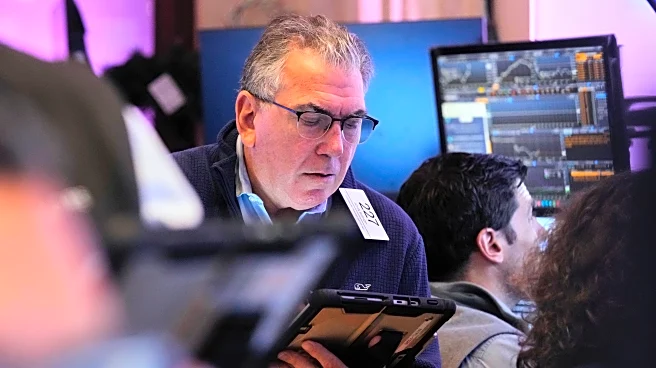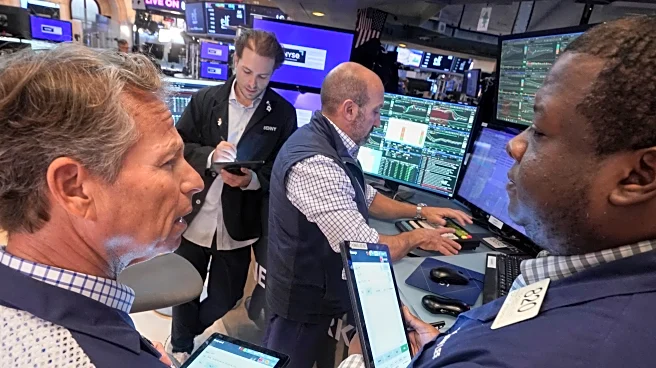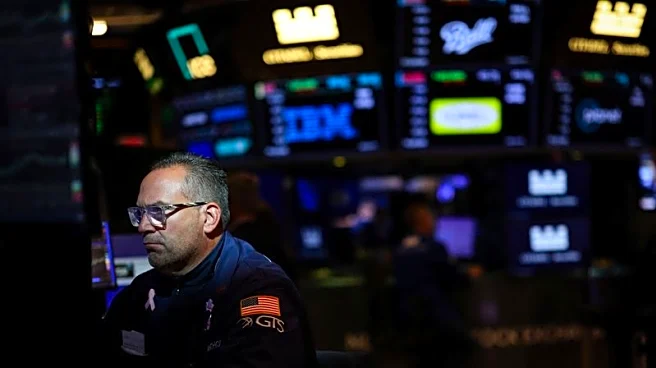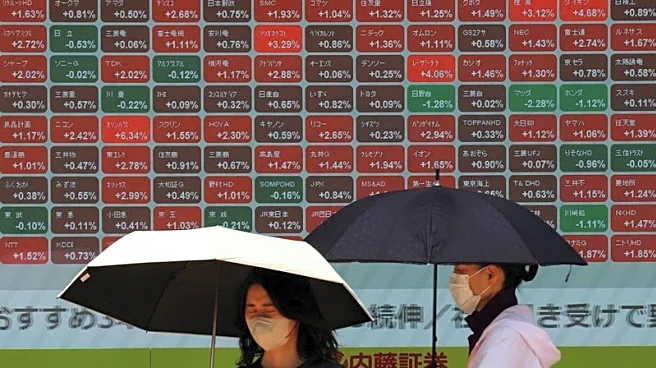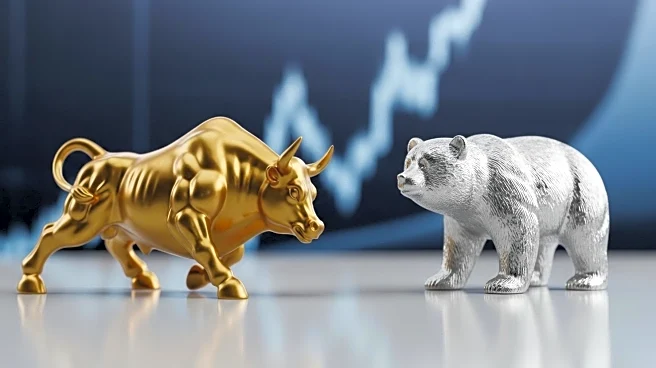What's Happening?
The U.S. stock market reached new heights on Thursday, with the Dow Jones Industrial Average surpassing the 46,000-point mark for the first time. This surge was driven by investor optimism following the release of August inflation data, which aligned with Wall Street's expectations. The data has bolstered hopes that the Federal Reserve will proceed with an interest rate cut in September. The Dow rose by 617 points, or 1.36%, closing at 46,108. Similarly, the S&P 500 and the Nasdaq also closed at record highs, gaining 0.85% and 0.72% respectively. The inflation report indicated a rise in consumer prices, but the increase was within anticipated levels, reinforcing the likelihood of a rate cut. Additionally, the Russell 2000 index, which includes smaller companies sensitive to interest rate changes, saw a significant increase of 1.83%.
Why It's Important?
The potential interest rate cut by the Federal Reserve is significant as it reflects the central bank's response to current economic conditions, including inflation and labor market dynamics. A rate cut could stimulate economic activity by making borrowing cheaper, which in turn can boost consumer spending and business investment. This development is particularly crucial as it comes amid concerns about economic stagnation and a slowing job market. The stock market's positive reaction suggests investor confidence in the Fed's ability to manage these economic challenges. However, the increase in jobless claims highlights ongoing vulnerabilities in the labor market, which the Fed's policy decisions will need to address.
What's Next?
The Federal Reserve is expected to announce its decision on interest rates at its upcoming policy meeting. Market analysts predict a high probability of a quarter-point rate cut, with a smaller chance of a more substantial half-point reduction. The Fed's decision will be closely watched as it will set the tone for future economic policy and market reactions. Additionally, the ongoing economic indicators, such as jobless claims and inflation trends, will continue to influence the Fed's policy direction and investor sentiment.



